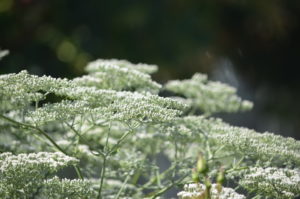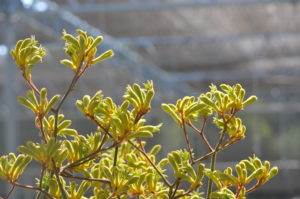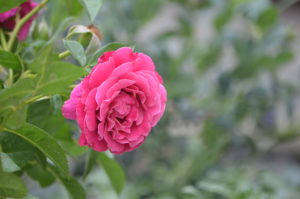Grow Your Own Bouquet of Cut Flowers
One of the many benefits of gardening is being able to bring the outdoors in, and what better way to do that than gathering a bouquet of fresh flowers from your own garden? A cutting garden is an old-fashioned idea that never goes out of style and it is easily adaptable to whatever your gardening space and conditions offer.
Although there are flowering plants that grow well in light to medium shade, there are more varieties that prefer a half to full day of direct sun. They generally prefer well-draining soil and they can be grown in containers or raised beds.
Following is a list of favorite flowers for cutting gardens. And don’t forget to add in some foliage plants like ferns and miniature ivy to fill out your arrangements! With a little planning, you can have garden-fresh bouquets in your home all year round. See Blooms for Every Season.
Cutting Garden Flowers
Baby’s breath (Gypsophila paniculata)
Begonia (Begonia x tuberhybrida)
Calla lily (Zantedeschia aethiopica)
Coneflower (Echinacea purpurea)
Cosmos (Cosmos bipinnatus)
Feverfew (Tanacetum parthenium)
Flowering tobacco (Nicotiana langsdorfii)
Fuchsia (Fuchsia spp.)
Gerbera daisy (Gerbera jamesonii)
Love-Lies-Bleeding (Amaranthus)
Peony (Paeonia)
Pincushion flower (Scabiosa spp.)
Rose (Rosa)
Siberian iris (Iris sibirica)
Sweet pea (Lathyrus odoratus)
Zinnia (Zinnia spp.)
Cutting Foliage
African boxwood (Myrsine africana)
Asparagus fern (Asparagus densiflorus)
Button fern (Pellaea rotundifolia)
Cast-iron leaf (Aspidistra elatior)
Maidenhair fern (Adiantum)
Pittosporum (Pittosporum)
Materials List:
1. A variety of plants from the lists above
2. Support structures, as needed
3. Trowel
4. Gloves
5. Organic fertilizer
6. Pruners or floral snips
Steps:
1. Prep the Soil: A couple weeks before planting, prepare the soil by spreading a 3- to 4-inch layer of compost and working it into the soil. Preparing the soil well in advance gives worms and beneficial nematodes time to incorporate the compost more completely into the soil.
2. Plant in Clusters: Rather than planting in rows, the way a flower farmer would, cluster the plants in groups of three or more of the same plant and set the clusters close together. Planting in this way not only makes the garden more attractive, it also makes it more appealing to pollinators, which will make your flowering plants more productive.
3. Provide Support: For vining plants such as sweet peas or large-flowering plants like some dahlias, install a trellis or some other structure that will provide adequate support throughout the growing season and keep flowers from flopping over onto the ground.
4. Feed Regularly: Continue to feed the plants with a side-dressing of compost or other organic fertilizer on a regular schedule. Usually, once-a-month feeding is sufficient.
5. Patrol for Pests: In order to keep the blooms and foliage pristine, check regularly for pests such as snails and earwigs that will eat the petals and leaves. Sprinkling diatomaceous earth on top of the soil around the plants may help to keep those pests under control. For sucking insects like aphids and scale, you can wash them off the plant with a blast of water from a hose or wipe them away with a wet paper towel.
6. Harvest Early: To harvest flowers, cut the blooms early in the day and when they are only about three-quarters of the way open.
7. Keep in Water: Put flowers immediately in a bucket of water and when you bring them inside to arrange them, cut the stems again at an angle under water. Woody stems may need the ends to be crushed a bit in order to absorb sufficient water.
8. Stay Fresh: To keep a vase of cut flowers fresh a little longer, change the water each day and add a capful or two of chlorine bleach to the water each time to kill bacteria that hasten the flowers’ decay. Flowers with stems that drip sap, such as poppies or daffodils, can be sealed by holding a lit match to the end or dripping hot wax over the end; they won’t be able to take up water, but the flowers will last longer than if all the sap drained out of them.

